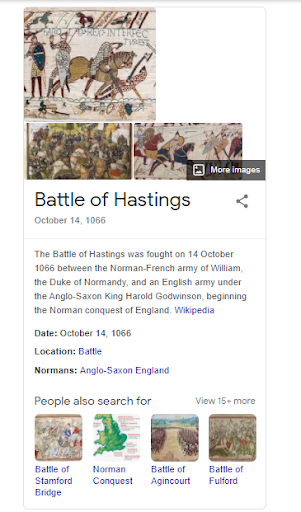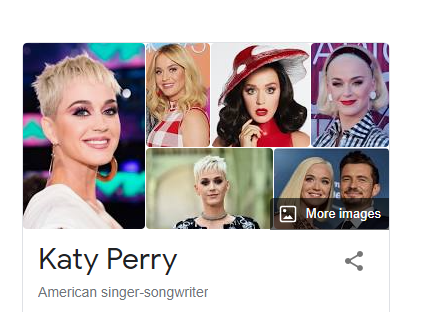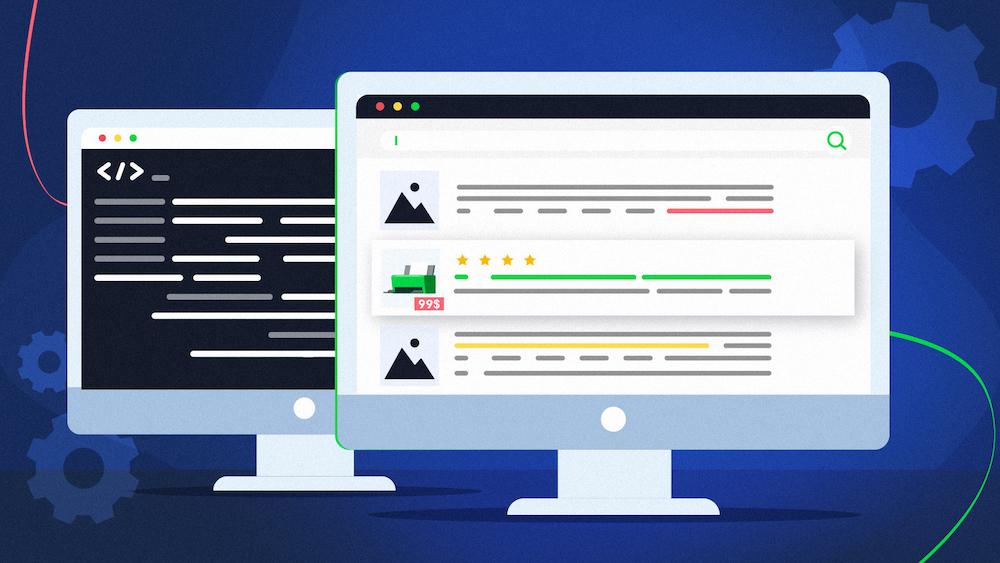Knowledge panels are infoboxes that appear in Google’s search results and show essential information about an entity and the connections between entities.
As we read in one of Google’s articles on knowledge panels, “Our systems aim to show the most relevant and popular information for a topic within a knowledge panel.”,
Understanding how Google generates knowledge panels and determines what data to show is vital for getting a knowledge panel for your business, brand, or perhaps for yourself.
Let’s see how knowledge panels can appear in search results and what you can do to get a panel for your organization, brand, or yourself.
To find the most in-depth information, I turned straight to the source and analyzed what Google’s patents tell us about how knowledge panels are generated!
What are knowledge panels?
A knowledge panel displaying crucial information about your business can significantly improve your search visibility. It can increase your engagement with customers, help you generate leads and turn them into business for your company.
Knowledge panels can appear in response to queries for entities in the Knowledge Graph.
Knowledge Graph is a database introduced by Google in 2012 populated with entities and information about them. Google can use the Knowledge Graph data to generate knowledge panels automatically.
Let’s look at this example of a knowledge panel:

Knowledge panels can display information like:
- A title and a summary of the entity,
- Images,
- Encyclopedia-like facts, e.g., date of birth and/or death, location,
- A more extended explanation/definition of the entity,
- Links, e.g., to social media profiles, websites, or related entities,
- Titles of songs, movies, or TV shows associated with the entity, e.g., ones in which the person created/appeared.
This information can be taken from numerous authoritative sources and updated as information about an entity changes. There is also an option for the entities to suggest a change to their knowledge panels.
Google patents on knowledge panels
There are a few patents granted to Google that provide helpful details on:
- When knowledge panels can be generated,
- What factors and signals can influence knowledge panels and their contents,
- What information knowledge panels can contain,
- How entity images are selected,
- How users can access or manage knowledge panels.
I will describe the methods and concepts provided by the patents on the above topics and explain some things to optimize the information about your entity for knowledge panels.
Only have a few minutes? Get the key takeaways!
Providing Knowledge Panels With Search Results
Published: May 2, 2013
Filed: August 3, 2012
The patent, filed soon after Google announced the introduction of the Knowledge Graph, is a comprehensive resource of methods for generating knowledge panels in search results.
Knowledge panels are generally provided for queries containing a reference to a particular entity. According to the patent, these entities can include “a person, place, country, landmark, animal, historical event, organization, business, sports team, sporting event, movie, song, album, game, work of art, or any other entity.”
How can knowledge panels be beneficial?
The patent points out several key advantages of presenting knowledge panels in search results:
The process of providing knowledge panels
The general process for providing a knowledge panel looks like this:
- The system obtains search results that respond to a received query.
- A factual entity referenced by the query is identified.
- It is determined what content to display in a knowledge panel for the factual entity. The content includes at least one content item from a first resource (i.e., content provided by a website, like HTML pages, PDFs, images, etc.), and at least one content item from a second resource, different than the first one.
- Data is then provided, allowing the identified search results and knowledge panel to be presented on a search results page.
- The content is presented in a knowledge panel area alongside at least a portion of the search results.
Knowledge panel templates
The patent discusses knowledge panel templates, which specify types of content items to be included in the panel and contain placeholders for different content items, e.g., a title, one or more images, a set of facts, etc.
The system may use different templates, depending on the entity type and the information that may be presented. There are also templates for subtypes of entity types.
For example, the “person” entity type may also have a template for an “actor,” “singer,” or a “historical figure.”
All knowledge panel templates include certain standard content items, such as a title, image, description, and at least one fact about an entity. In addition, these items tend to be located in the same places to keep the panel format consistent.
The title of a knowledge panel can be the entity’s name or alias, and it may differ from the search query for which the panel was generated.
For example, a query may reference an alias or shortened name of a celebrity, but the title of the provided panel may include their full legal name.
Content displayed in knowledge panels
Knowledge panels include factual information related to the particular entity, often presented as summaries of relevant details.
For example, a knowledge panel for a nation may contain its map and flag, official language, and other related facts.
When determining what facts to display in a knowledge panel, Google may consider past search queries referencing the given entity and provide details that answer these queries.
For instance, if a significant number of past queries referenced a person’s height, it may be included in this person’s knowledge panel.
The patent also tells us that, e.g., for a landmark, a panel can include:
- an image of the landmark published on a first webpage hosted by a first publisher,
- a set of facts about it, published on a second webpage hosted by a second publisher.
It means that the information can be taken from multiple resources, in this case – two different websites.
Panels may contain images, as well as other interactive features, like audio or video files.
Queries received by the system can be associated with numerous distinct meanings. The system can identify content related to each of these meanings. In some situations, the panel can contain content for two or more distinct meanings.
Location and size of knowledge panels
According to the patent, knowledge panel results may vary in size. They tend to be larger than regular search results, taking up space of two, three, or more standard search results, but can also be the same size or smaller than a typical result.
Knowledge panels can also be located inline or adjacent to regular search results or in place of the other results. Looking at search results today, it seems that Google settled for adjacent positioning for desktop and inline for mobile.
Triggering knowledge panels
Granted: February 16, 2021
Filed: March 14, 2013
This is another patent that focuses on methods for providing knowledge panels within search results when users are looking for specific entities.
The patent explains that topicality, determined with a partial topicality score, measures topical relatedness between a factual entity and search results.
For example, an official web page for a particular celebrity may have a higher topicality score than a web page containing content about many different celebrities.
The process for generating knowledge panels
The primary process for generating a knowledge panel is similar to the method from the previous patent, but a few elements are different.
After identifying the factual entities referenced by the search query, the system selects a particular entity for generating a knowledge panel. Then it measures topicality between the identified entities and the obtained search results before generating a knowledge panel based on, e.g., the content available for the entity.
Entity index
The patent explains that there is an entity index containing data about known entities, including information about entity aliases.
The system may check whether the query refers to a known entity by comparing the received query or terms it contains to the entity index. The entity index could be a reference to the Knowledge Graph, which serves a similar purpose for Google.
Disambiguation and dominant entity knowledge panels
Queries can refer to more than one entity or terms considered to be aliases of multiple entities.
The patent provides a lot of details on how multiple entities can be displayed in knowledge panels.
Here is one of the provided examples:
- The system can receive a query including “Phoenix, Ariz.” or the query could be obtained from a device located in Arizona.
- Then, the system may decide that the most likely entity referred to in the query is the city of Phoenix in Arizona and provide a knowledge panel for this city.
- However, if the query only includes “phoenix,” the provided knowledge panel may correspond to both the city and the mythical bird.
For such queries, associated with multiple distinct meanings, the system may provide the following types of knowledge panels:
- Disambiguation knowledge panel – contains content for two or more entities and can enable users to specify which one they are interested in.
This panel can include a title, short description, and a link to additional information about that entity or a search for it. - Dominant entity knowledge panel – includes content for multiple entities but shows more content for one or more matching entities.
More content can be displayed for an entity that matches the query more closely, is more topical to search results for the query, or is more relevant to the query.
The dominant entity knowledge panel can include, for a dominant entity:
- a title,
- image,
- description,
- a set of facts,
- links to other resources about it, and
- additional content.
Determining whether a knowledge panel should be provided
There are a few factors that the system may consider in providing a knowledge panel for a query.
These factors can consist of:
- click-through rates,
- other performance elements of search results for the query, and/or
- content available for an entity referenced by the query.
Some examples include considering:
- Whether the results for the query have a low engagement rate, such as a low click-through rate.
- Whether the query is non-navigational, e.g., if the click-through rate of a high-ranked result for the query is high.
- Whether enough content can be found for the entity to be included in a knowledge panel.
- Whether the knowledge panel for the entity includes links to standard search refinements that would have otherwise had to be put in manually by the user.
The patent provides an example of a Famous Actor who is associated with movie appearances and music.
- Referring to the movie appearances, the knowledge panel can include images of posters for movies that the Actor appeared in.
- This set may be obtained from an online movie database and/or include a link to the database.
- Referring to the music, the knowledge panel can include a set of images for albums released by the Actor.
- This set may be obtained from an online music database or an online music service and include a link to the source.
We also read that the information regarding movies, albums, or songs associated with an entity can be shown in a table.
Knowledge panel templates
I have already described knowledge panel templates in my analysis of the Providing Knowledge Panels With Search Results patent, and this patent adds more to it.
When determining whether a knowledge panel should be shown, the system may look at not only what content is available for the entity but also the type of this content.
Knowledge panel templates include placeholders for specific types of content to include in the panels. If the content specified by the template for that particular entity is not available, a knowledge panel may not be provided.
Measuring topicality and partial topicality score
As mentioned, topicality between an entity and a search result is measured using a partial topicality score. The score is determined based on the contents of the resource to which the result is linked.
The partial topicality score can be calculated based on the quantity, placement, and/or type of references to the entity included in the resource for the search result.
The references can be in different formats, such as:
- Text identifying the entity,
- Images, like an image with meta-information on the entity,
- Audio,
- Video, and
- Other content.
For instance, a web page with multiple references to a specific landmark can receive a higher topicality score for the landmark than a page with a single reference to it.
The partial topicality score can also be calculated based on the location of references to the entity in the resource for the search result.
To determine the score, different resource areas might be given different weights. These areas can include:
- the title,
- main text,
- tags, or
- anchor text.
So, a reference to the entity located in the resource’s title may carry greater weight than a reference contained in the resource’s footnote.
Knowledge panel
Granted: July 10, 2018
Filed: September 21, 2016
Here is another patent that gives us vital details on how knowledge panels are provided in search results.
Here is the background to introducing knowledge panels provided in the patent:
Knowledge panels address this issue, instantly serving the most crucial entity data and providing resources for further reading.
The process for providing knowledge panels
In this patent, the process for providing knowledge panels focuses on identifying content items relevant to the entity referenced by the search query.
For each content item, the system may determine:
- A content category to classify the item,
- A rank score that indicates the relevance of the item to the entity.
Based on these two metrics, the system may choose a set of knowledge modules for the panel, where each set should contain two different module types. In the end, data may be provided to present the set of knowledge modules.
Knowledge modules
The patent explains that a knowledge module is “a user interface module for presenting one or more content items in a particular format.”
Knowledge modules can present content items in a particular format, e.g., a row of images or a table.
Also, the modules can be based on the entity or entity types. They can also be determined by the characteristics of the content items relevant to the entity or by looking at content presentation constraints for knowledge panels.
Examples of knowledge modules include:
- For presenting a movie, e.g., where an actor has played a role, the preferred format may be images, such as images showing movie posters,
- For presenting songs performed by a singer, the preferred format may be a table listing songs and other information.
Granted: August 4, 2015
Filed: February 5, 2013
This patent tells us how entity images may be selected to represent people in knowledge panels for a query.

The process for selecting entity images
The system may look at both image scores and image resource quality scores to determine an image authority score, based on which the images can be ranked, and the highest-ranking ones may be selected to represent an entity.
Image scores
An image score for an image can be generated “based on the quality scores of the resources that include the similar images relative to the quality scores of the resources that include the images identified as associated with the particular person.”
Here are some valuable things about how image scores are analyzed:
- Images that get many clicks during searches for the particular entity can have a higher score than other images.
- The system may use face recognition based on a confidence level that the person in the image is similar to other images showing that person.
- A portrait score may be determined to verify whether the image matches the features, specifically face features, in other images.
Image resource quality scores
Image resource quality scores are generated from the quality scores of resources, e.g., web pages including the image.
Quality of resources could be based on:
- the number and type of links pointing to it,
- user ratings,
- click-through rates (for example, “number of selections of search results referencing the resource with respect to a particular query or multiple queries”).
Generation of enhanced search results
Granted: November 10, 2020
Filed: April 30, 2018
This patent provides methods that enable users to manage a knowledge panel, e.g., for a business.
The patent describes processes that can make it more convenient and quicker to change knowledge panel details, like the business’ address, pictures, contact information, user-provided reviews, and more. The person does not need to access a separate system to manage entity profile information, such as Google My Business.
The ability to make changes can be enabled after determining that the user providing the query is either the entity’s owner or is otherwise associated with it.
Then, the system may provide search results responding to the query and an interface allowing the owner to access, edit or update entity data.
Be sure to check out Bill Slawski’s article on the knowledge panel interface, where he shows how it could be presented in search results.
How can you optimize for Google knowledge panels?
Optimizing the content available about your entity – whether it’s you or an organization you work for – is the primary step to take when trying to get a knowledge panel with accurate entity information.
Here are some specific suggestions for what Google is looking for and where you should start.
Google needs to be able to find specific and relevant information about your entity
Use structured data to make it easier for Google to locate and understand that information. Structured data does not guarantee that data will be correctly shown in SERPs, but it is a strong indicator for Google.
For example, you may consider adding the Logo structured data to your site. This markup lets you specify which image should appear for your organization’s logo in the knowledge panel.
Check out Jason Barnard’s guide on how to implement structured data for a company.
Creating a Google My Business account is an essential step
Your GMB account is a source of information on your business address, contact details, images, and more.
This data can then be used to create a business listing in search results that resembles a knowledge panel but is dedicated to local businesses. In addition, it includes a Google Maps listing, for which the information is taken from Google My Business, not from the Knowledge Graph.
Google considers multiple sources when creating knowledge panels
Although Wikipedia is still one of the primary sources for the Knowledge Graph and generating knowledge panels, it’s not the only one. So if you can’t get an article about yourself or your brand on Wikipedia, you still have a chance for a knowledge panel in search results.
Add your data to online sources that are trusted or relevant to your industry or field of interest. Check out this breakdown of sources appearing in knowledge panels created by Kalicube to understand what Google may view as trustworthy.
Google may not show a knowledge panel if there is not enough information about your entity.
Make sure the key information remains consistent across different websites, social media channels, and other sources. Jason Barnard said this about how Google considers information about entities: “Google looks at all the places companies are referenced around the web. If all of the references change at the same time to the new reference, Google will understand very quickly.”
That’s why you should keep track of references to your entity and regularly update them if anything changes. Jason specifically suggests focusing on Twitter boxes, video boxes, YouTube feeds, social media platforms, blue links, and knowledge panels.
Ensure there is content that clearly explains what you or your company do
Such a page should include factual information that you want others to know about you.
For example, this could be an “About Me” page on your website.
It’s vital that this page and other content you create focus on your entity and related concepts? that define it. For example, if your brand is frequently mentioned on the same pages as technical SEO or specific concepts connected to it, like web performance or site architecture, Google could understand that this is what your brand specializes in.
Focus on concepts that are most relevant to your field, products, or services. It’s recommended you include links to third-party references to your entity on your website as they are valuable to Google as independent sources. Here is how Jason Barnard explains it: “Google is looking for the one page that you control. It wants to be sure you control it so that it has a reference that it can then go out to the rest of the web and compare that reference”.
If you have other questions about knowledge panels, check out Google’s Knowledge Panel Help site.
TL;DR
- Knowledge panel templates specify content items to show in knowledge panels, which depend on the entity type, subtype, or information that should be displayed.
- Google may look at users’ search queries to determine what information about an entity will be relevant to display in the knowledge panel.
- Facts about entities are taken from multiple sources. Generally, a knowledge panel will show data from at least two different sources.
- There is an entity index containing data about known entities (which is most likely Google’s Knowledge Graph).
- The system can analyze multiple entities that appear in search queries. In some cases, disambiguation or dominant entity panels can be displayed in search results.
- The system can look at the click-through rate for the results for the query to determine whether a knowledge panel should appear.
- A knowledge panel can only be generated if enough content can be found about an entity.
- The system may calculate a partial topicality score that measures topicality between an entity and a search result. The partial topicality score can be based on entity references on a web page, such as their quantity, location, or type.
- The system may look at image scores and page quality scores to determine an image authority score used to choose an image for a given knowledge panel.
- Images that get a lot of clicks in searches for a specific entity may have a higher score than other images.
- The system can determine that the user providing a search query is associated with the entity in the query and provide an interface for making changes to data connected with the entity.

Hi! I’m Bartosz, founder and Head of SEO @ Onely. Thank you for trusting us with your valuable time and I hope that you found the answers to your questions in this blogpost.
In case you are still wondering how to exactly move forward with fixing your website Technical SEO – check out our services page and schedule a free discovery call where we will do all the heavylifting for you.
Hope to talk to you soon!








